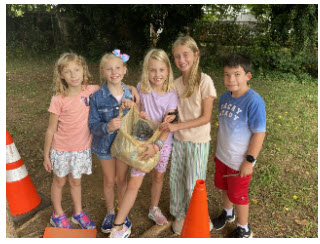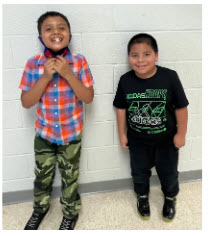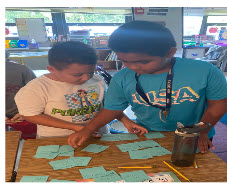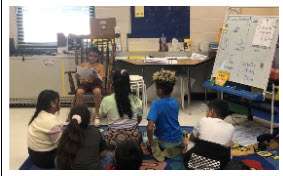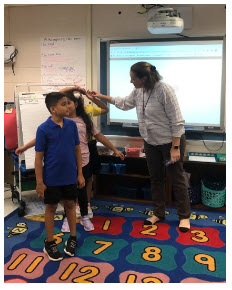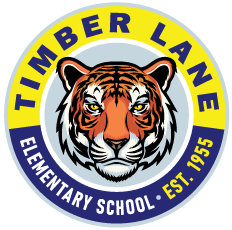October 2022 3rd Grade Newsletter
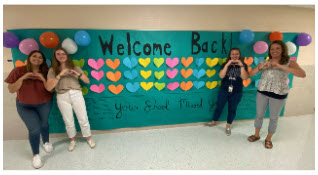
Introduction
We had a great start to the school year in third grade! We focused on building our classroom community and establishing routines.
Important Dates & Reminders
- The third-grade schedule has had a few changes. Here is a look at our updated daily schedule. Thanks for your understanding and flexibility while supporting your child with this change.
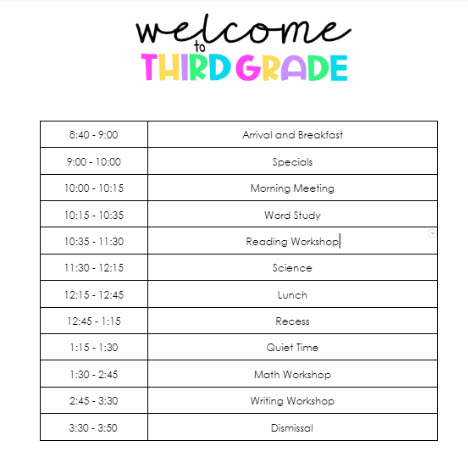
- Remember to sign up for a Parent Teacher Conference! Your child’s teacher will coordinate the sign up.
- Virginia Growth Assessment (VGA) - Math will be administered on Thursday, October 6. Please be sure that your student is well rested and on time for school.
October Dates
- Wednesday, October 5 - No school, Student Holiday
- Monday, October 10 - No school for students, Teacher Workday
- Tuesday, October 11 (6:00 - 7:30) - Family Science Night at Timber Lane
- Monday, October 24 - No school, Student Holiday
- Friday, October 28 - Early Release for students, end of Quarter 1
- Monday, October 31 - No school for students, Teacher Workday
Language Arts
What We Learned This Past Month:
- We worked on building our reading and writing stamina, practiced having conversations about our reading and writing, and established our routines for Word Study. We reviewed skills taught last year (blends, silent-e word pattern, and the vowel pairs ai and ay).
- Students began learning about characters and thinking about a story through different character’s perspectives.
- Students also started learning about personal narratives and began writing their own stories.
What We Will Be Learning Next Month:
- We will continue to learn about characters in order to understand that characters are the heart of fiction stories
- During the remainder of our Personal Narrative unit, students will focus on how they can teach a lesson using something that happened in their lives. We will also focus on different elaboration techniques in our writing.
Math
What We Learned This Past Month:
- We completed our first unit: Data, Time, and Temperature. Students reviewed how to collect, create and analyze data in both bar graphs and pictographs. When telling time, students expanded on their knowledge from last year and are working on telling time to the nearest minute. Students also learned how to tell the temperature to the nearest degree.
- We began Unit 2: Addition and Subtraction (Part 1). We started with reviewing place value concepts taught last year and quickly expanded on what we already knew. Students learned how to read, write, and identify the place value in four-digit numbers. Students also worked on rounding, comparing and ordering numbers.
What We Will Be Learning Next Month:
- As we wrap up our second unit, students will focus on solving single step and multi-step addition and subtraction problems.
- At the end of the month we will begin Unit 3: Multiplication and Division (Part 1). Students will learn to represent multiplication and division problems using various strategies and models.
Advanced Math
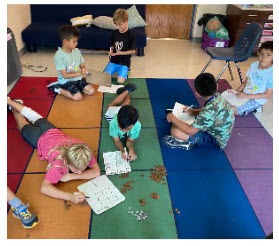
What We Learned This Past Month:
-
Students completed Unit 1: Addition and Subtraction (Part 1). Students worked on solving single step and multi-step problems. Students also worked on identifying place value positions of four-digit numbers, comparing, contrasting, and ordering numbers, and rounding numbers to the nearest ten and hundred. Students also focused on counting a collection of coins and comparing the value of two sets.
-
Students also began Unit 2: Multiplication and Division (Part 1). Students learned how to represent multiplication and division problems using a variety of strategies and models.
What We Will Be Learning Next Month:
-
Students will continue working on solving single step and multi-step multiplication and division problems. A study guide will be sent out at the end of the unit before our test. Please look over the study guide with your child and have them complete the problems on their own.
-
We will begin Unit 3: Fractions (Part 1). Students will learn to name, write, and represent fractions and mixed numbers. We will learn how to compare fractions with like and unlike denominators. Students will also learn that fractions also represent a division statement and will be able to represent that with a model.
A study guide will be sent out at the end of the unit before our test. Please look over the study guide with your child and have them complete the problems on their own.
Science
What We Learned This Past Month:
- Students began their ladybug unit. We learned that animals have structures and behaviors that help them to survive in their environments.
What We Will Be Learning Next Month:
-
We will wrap up our ladybug unit!
Social Studies
What We Learned This Past Month:
- Students thought about their hopes and dreams for this school year. We then used these to help create our classroom rules. Students learned how to be safe and responsible digital citizens and also learned about the three branches of government: Legislative, Executive, and Judicial.
What We Will Be Learning Next Month:
- Students will learn about World Geography. Students will review the 7 continents and 5 oceans from last year. We will also learn about specific geographic features specific to each continent.
 A Note From Mrs. Grabel, Advanced Academics Resources Teacher
A Note From Mrs. Grabel, Advanced Academics Resources Teacher
This month Mrs. Grabel, our Advanced Academics teacher, introduced a Creative and Critical Thinking (CCT) Strategy: Mindmapping. Below is a note from Mrs. Grabel about the strategy and a home challenge to try with your child:
A Mindmap is a research- based strategy using colors, symbols, images, and words that all relate to a specific topic. The topic with the main image/symbol is represented in the middle of the students’ work, and then branches flow out of the structure based on the main ideas related to that topic. Students use a different color or line for each main idea, and add as many pictures, and 1 word per branch.
Topics for mindmaps can vary by age, and ideas. Many students find it easy to start with themselves as the main topic first, and then add branches based on hobbies, activities, school, family, etc. Older students can use this technique to review and practice for tests/assessments, or as an end of unit concept map. Often students enjoy making mindmaps on specific science, math or social studies content. Students can also create one on a book they’ve read, which can help them gain a deeper understanding of the concepts, perspectives, and relationships between ideas. Encouraging students to use symbols and images can really stretch their ability and thinking! Give it a try at home with the following idea:
Your Challenge:
Create a Mind Map of our community! Where do people play or get exercise? Where do you eat? Where do we shop? Where do we get help if we need it? Where do people come together to learn? Be sure to use pictures and colors to create your mind map!
Reminders
- Make sure your child comes to school with a snack and water bottle every day.
- Contact the attendance office if there is a change to your child’s schedule and will cause them to be absent, tardy or be leaving early.
Photo Gallery
